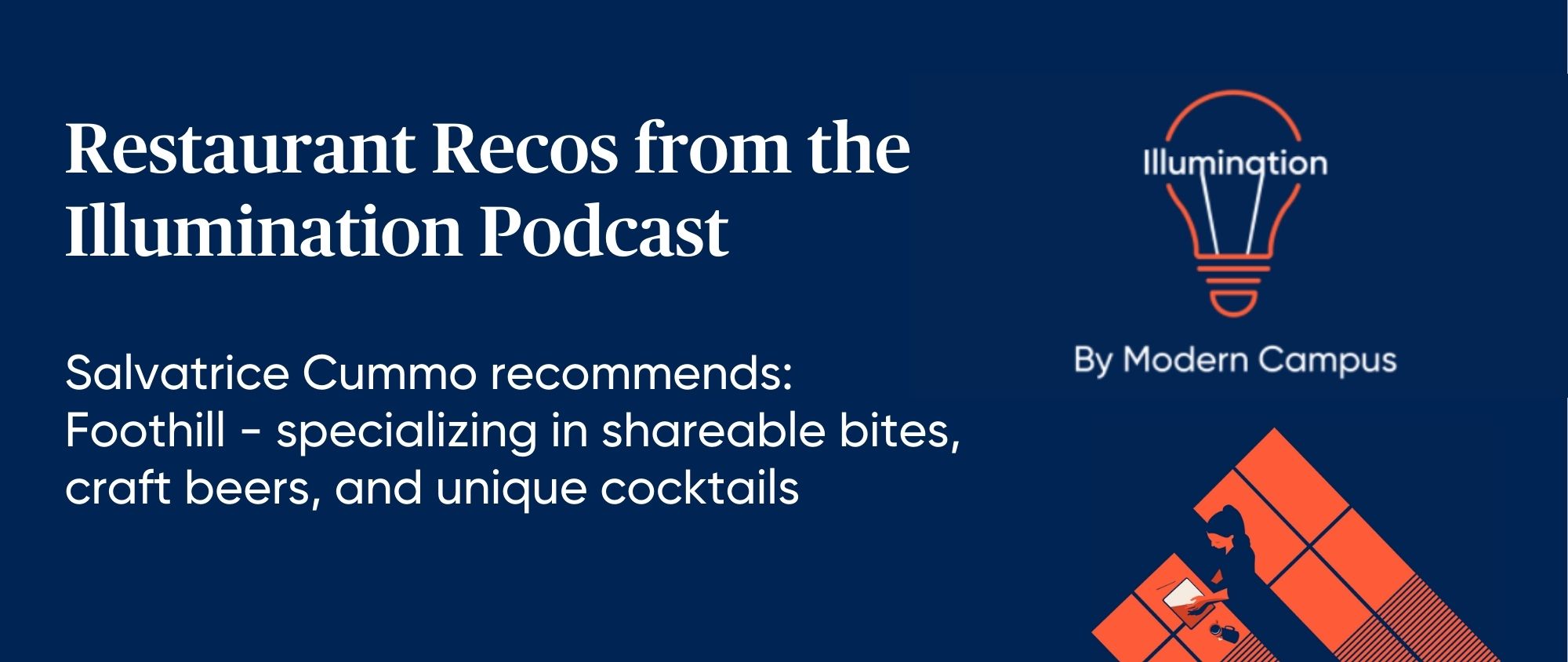When Industry Meets Continuing Education: How Business Partnerships Benefit the Modern Institution
Today’s community colleges are at the forefront of community engagement and workforce development.
By partnering with local businesses, community colleges are not only able to provide students with the chance to learn in a real-world setting, but faculty are also able to better understand the ins and outs of the market for which they’re readying students.
On this episode of the Illumination, host Amrit Ahluwalia is joined by Salvatrice Cummo, Vice President of Economic and Workforce Development at Pasadena City College. The two discuss the role continuing education plays in supporting the mission of the modern community college, and how government policy changes can drive investment from the surrounding community.
In continuing education, the mission to support the modern community college can seem daunting or even unfeasible to some people. But Pasadena City College’s Community Education, a division of their CE program, act as a pipeline for students to earn both credit and non-credit credentials.
“Community education should serve a population that may be hard to reach,” Cummo says. “Or a population that has little interest in going through the motions of onboarding as a new student through a traditional community college setting. If I had one wish, it’d be to streamline the onboarding process.”
Continuing education also serves as an entry point for business engagement. Not-for-credit courses can offer micro-credentials alternative learning methods that grants businesses new opportunities to engage with potential employees through the institution.
The reason employers are leveraging themselves as an education tool for the next wave of employees is that traditional schools simply can’t keep up with the changing demands of the job market.
“Some of the courses are not relevant,” Cummo says. “They’re not flexible. The courses are not as agile as we’d like them to be. Continuing education offers just that though: agility, flexibility, just in time training and relevancy to the trends that are happening.”
The modern continuing education unit needs to work intentionally—as a starting point for program mapping and matriculating students into other areas of the college. Practices like this keep students enrolled and provide them with more opportunities at the same institution.
“Continuing education is really an entry point for both the employer and non-participating community members, or members that had to pivot due to the pandemic,” Cummo says. “People that were forced out of their career and had to get retrained.”
The institution needs to be able to incentivize business partners though. There has to be a give and take in any relationship, and the one between a school and local industries is no different.
Tax credits or tuition reimbursement as part of a benefits package are just some examples of how to best engage with businesses when developing a program like this.
“There are lots of studies that show employers who put intentionality around the continuum of education for their employees seeing significant growth,” Cummo says. “How can we as a state or as a system, incentivize that? Is there a policy we need to either disrupt or create that streamlines and expedites the process in which these curricula are approved?”
In this instance, streamlining and expediting does not mean a six-month turnaround; it means two weeks.
There is more than just the curriculum development that could benefit from an improved and faster process though. Areas like registration and financial aid could be transformed into a simpler process with the right policy or cultural changes.
Changes to the faculty’s thinking in ways that bolster experiences from outside community within the classroom, such as externships, or someone shadowing a professional, could be a solution.
“I wonder if we need to institute a policy that says each local college needs to allocate a certain amount of money for faculty externships,” Cummo says. “The day begins and ends with our faculty's engagement with our participants and students. That’s why we’re here.”
Higher ed faculty and staff work to make their institutions a better place, but the real change happens in the classroom between instructors and students. Ensuring faculty are up to date on what it takes to thrive in their fields can help boost a student’s engagement, retention, and success down the line.
Listen to This Episode
Listen on Apple Podcasts Listen on SpotifyRSS Feed
Last updated: July 22, 2022



